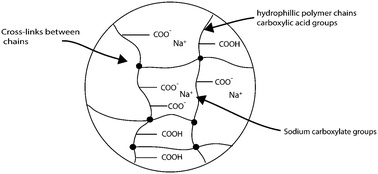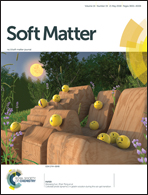A three-dimensional transient mixed hybrid finite element model for superabsorbent polymers with strain-dependent permeability†
Abstract
A hydrogel is a cross-linked polymer network with water as solvent. Industrially widely used superabsorbent polymers (SAP) are partially neutralized sodium polyacrylate hydrogels. The extremely large degree of swelling is one of the most distinctive characteristics of such hydrogels, as the volume increase can be about 30 times its original volume when exposed to physiological solution. The large deformation resulting from the swelling demands careful numerical treatment. In this work, we present a biphasic continuum-level swelling model using the mixed hybrid finite element method (MHFEM) in three dimensions. The hydraulic permeability is highly dependent on the swelling ratio, resulting in values that are orders of magnitude apart from each other. The property of the local mass conservation of MHFEM contributes to a more accurate calculation of the deformation as the permeability across the swelling gel in a transient state is highly non-uniform. We show that the proposed model is able to simulate the free swelling of a random-shaped gel and the squeezing of fluid out of a swollen gel. Finally, we make use of the proposed numerical model to study the onset of surface instability in transient swelling.



 Please wait while we load your content...
Please wait while we load your content...